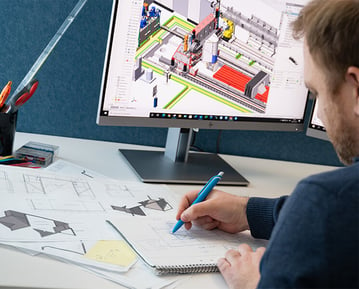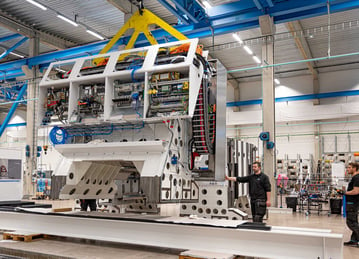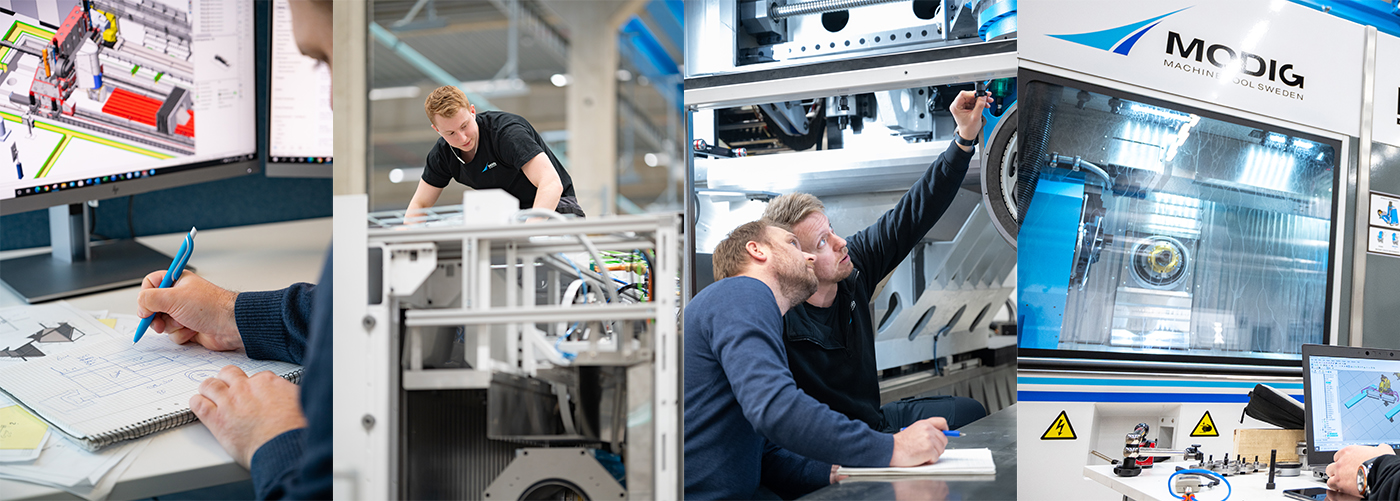The driving force behind new machining creations is the pursuit of innovation, exceeding the customers needs, both now and in the future, and staying ahead of the competition.
Have you ever wondered about the intricate process of bringing a new machining center to life? From inception to the final product, several stages are involved in creating a cutting-edge piece of technology that benefits both the end-user and the manufacturer's competitive edge. However, it may not revolutionize the manufacturing industry like some of its predecessors, The CNC machines, Horizontal machines, and Inverted machining centers. A new machining center often brings about advancements and improvements from previous models, setting a new standard for excellence in the field. The stages involved in this process are crucial, and each step is taken with care and precision to ensure the best possible outcome. Whether you're an experienced industry professional or simply curious about the manufacturing process, join us on this enlightening exploration as we uncover the stages of creating a new machining center.

Conceptualization
In the beginning stages, the machine manufacturer's innovation team embarks on a discovery journey to create an innovative machining center. The aim is to meet the market's demands and find solutions that exceed expectations now and in the future. The team challenges themselves to think outside the box, explore new possibilities, and question conventional norms. The journey begins with a blank slate, where everyone involved envisions the future and anticipates customer needs. In an interview with David Modig, President of MODIG Machine Tool, he says they uphold three essential principles throughout development: speed, precision, and quality.
Picture a scenario in which an automotive part producer seeks to enhance the manufacturing process for a battery component of electric vehicles.

Their goal is to expedite production while maintaining exceptional efficiency and quality to decrease lead times and diminish the cost of each unit. Regrettably, current machining solutions cannot achieve the desired cycle times, resulting in a bottleneck in the production line. The machine manufacturer has initiated the ideation phase and will now try to create a machine that defies conventional beliefs about how machines function to push the limits for battery components manufacturing. The original idea has transformed into a clear concept, and the features of the machining center are becoming more visible.
Design and Engineering
The next step is design and engineering after developing the concept. This stage involves creating detailed plans and specifications for the machining center, which includes determining its size, shape, features, and functionality. The subsequent step is to create a 3D model of the machining center to evaluate its performance and run simulations to ensure it meets the required standards and specifications. If any modifications are necessary, they can be made easily using a CAD program. Once the design is finalized, a prototype of the machining center is created to test its performance and address any issues.

Manufacturing
The manufacturing team's dedication to precision and accuracy during the manufacturing and assembly of the machining center ensures that the machine will operate flawlessly once the machining solution is completed and up and running in the customer's production.
Test and Quality Control
Once the machining center is created, it undergoes meticulous quality control testing to guarantee it meets all required standards. This phase encompasses evaluating the machine's precision, robustness, and performance.
Delivery and Installation
With all the required exams passed, the machining center is delivered and ready for installation. Employees are trained to operate and maintain it, ensuring a smooth and efficient workflow.

Creating a new machining center is a complex undertaking that requires a team of skilled professionals with diverse expertise. Each process step, from the initial design to final delivery, is critical to ensuring that the end product meets the customer's needs and specifications. With the right team and resources, the process can be streamlined to produce a top-of-the-line machine that delivers exceptional results.

